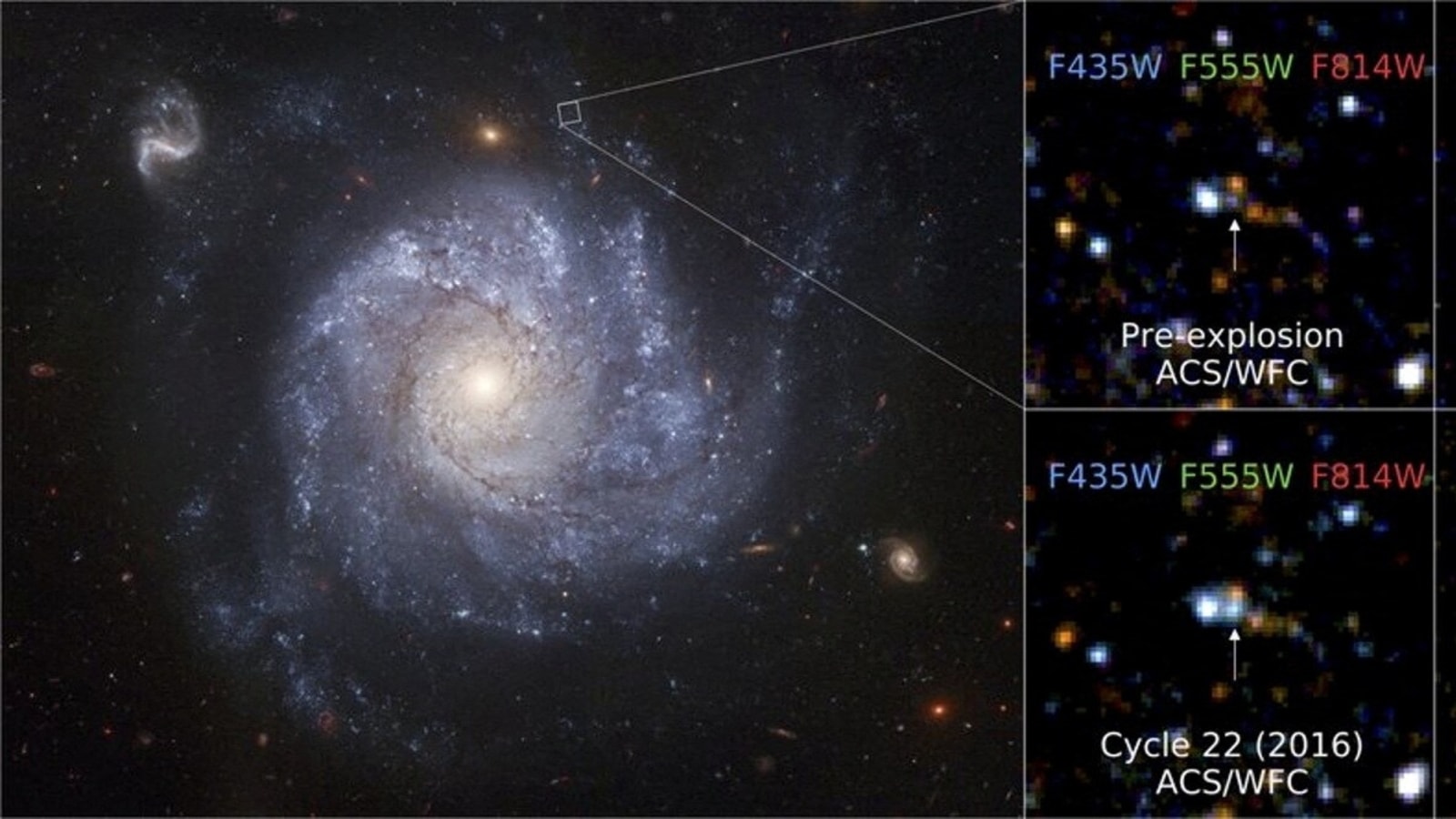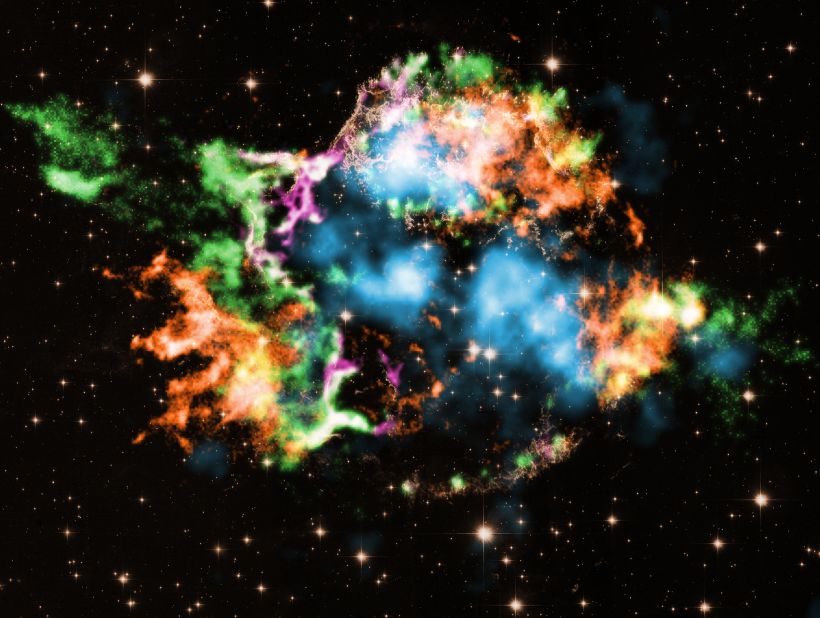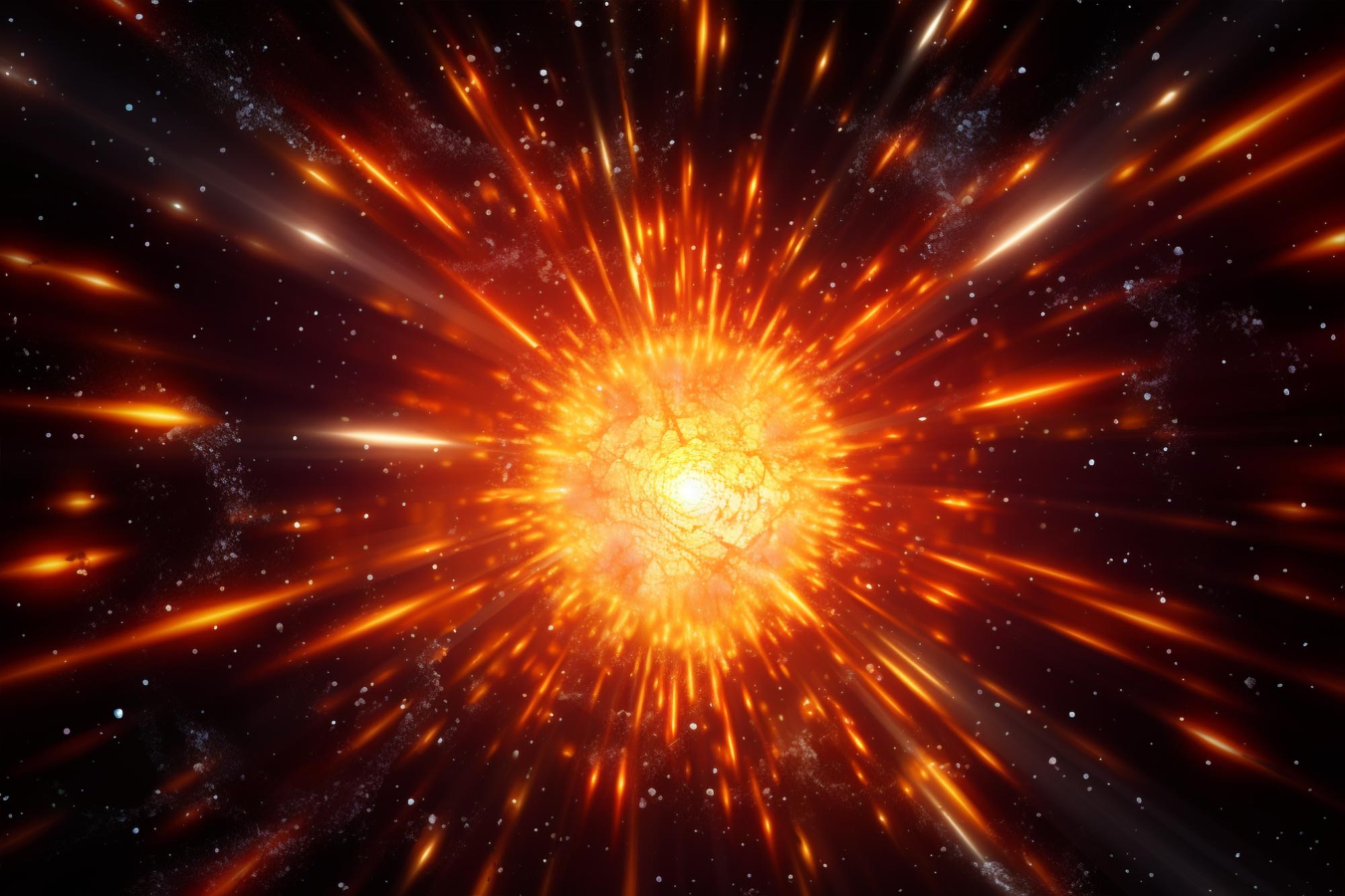Type 1 supernova occurs in binary star systems, while Type 2 supernova involves massive stars collapsing. These explosive events result in the release of tremendous energy and the creation of new elements.
Supernovae, one of the most powerful phenomena in the universe, play a crucial role in the formation of celestial bodies and the dispersion of elements essential for life. Understanding the differences between Type 1 and Type 2 supernovae is fundamental in our exploration of the universe and the intricate processes that govern its evolution and diversity.
We will delve deeper into the unique characteristics and implications of these two types of supernovae, shedding light on their significance in the grand tapestry of cosmic events.

Credit: www.hindustantimes.com
Formation And Characteristics
When it comes to the fascinating world of supernovae, there are two main types – Type 1 and Type 2. Each type has its own unique formation processes and distinct characteristics. Let’s delve into the differences between Type 1 and Type 2 supernovae in terms of their formation and key features.
Type 1 Supernova Formation
Type 1 supernovae occur in a binary star system, where one of the stars is a white dwarf. The white dwarf pulls in material from its companion star until it reaches a critical mass, triggering a runaway nuclear fusion reaction.
Type 2 Supernova Formation
Unlike Type 1 supernovae, Type 2 supernovae originate from the explosive death of a massive star. When the core of the star collapses upon exhausting its nuclear fuel, it undergoes a rapid implosion followed by a powerful explosion known as a supernova.
Characteristics Of Type 1 Supernova
- Originates from binary star systems
- Presence of a white dwarf as the primary star
- Triggered by the detonation of the white dwarf
- Produces consistent luminosity patterns
- Lacks hydrogen lines in its spectrum
Characteristics Of Type 2 Supernova
- Occurs from massive star collapse
- Results in the formation of a core-collapse supernova
- Emits a variety of elements in its spectra, including hydrogen lines
- Generates irregular luminosity patterns
- Leaves behind a dense remnant such as a neutron star or black hole
Emission Spectra
Emission Spectra: Emission spectra of Type 1 and Type 2 supernovae differ significantly.
Differences In Emission Spectra:
Type 1 Supernova: Characterized by strong silicon emission lines.
Type 2 Supernova: Display prominent hydrogen emission lines.
Identification And Analysis:
- Type 1: Silicon lines are key identifiers, indicating lack of hydrogen.
- Type 2: Presence of hydrogen lines marks these supernovae distinctly.
Nucleosynthesis
Nucleosynthesis, the process by which elements are synthesized in the cores of stars, plays a crucial role in the understanding of the universe’s chemical makeup. This fundamental process occurs during the explosive events of supernovae, specifically during Type 1 and Type 2 supernovae. Understanding the nucleosynthesis in these distinct types of supernovae is essential for comprehending the role they play in the formation of elements and the differences in their nucleosynthesis processes.
Role In Element Formation
The nucleosynthesis in Type 1 and Type 2 supernovae is responsible for the creation of elements beyond iron in the periodic table. This includes the formation of heavy elements such as gold, uranium, and lead. These elements are essential building blocks of planets, including our own, and are critical in the development of life as we know it. The explosive nature of supernovae provides the energy and conditions necessary for the fusion and synthesis of these elements, contributing to the richness and diversity of the cosmos.
Distinguishing Nucleosynthesis Processes
The nucleosynthesis processes in Type 1 and Type 2 supernovae differ in their underlying mechanisms. Type 1 supernovae involve the explosive thermonuclear fusion of white dwarf stars, leading to the production of elements through a process called rapid neutron capture, or the r-process. On the other hand, Type 2 supernovae result from the core collapse of massive stars, where nucleosynthesis occurs through a combination of fusion reactions, including the slow neutron capture process, or s-process. These distinct processes give rise to unique isotopic signatures and elemental abundances, allowing scientists to discern between the nucleosynthesis products of each type of supernova.

Credit: www.cnn.com
Observational Differences
In studying supernovas, researchers have observed several key differences between Type 1 and Type 2 supernovas. Understanding these observational differences is crucial for distinguishing between the two types and for advancing astronomical research. Let’s explore the distinguishable visual characteristics and the impact of these supernovas on the field of astronomy.
Distinguishable Visual Characteristics
Type 1 supernovas, often called thermonuclear supernovas, stand out due to their lack of hydrogen lines in their spectra. These explosions occur when a white dwarf star in a binary system accretes enough matter from its companion star, reaching a critical mass. The release of immense energy results in a brilliant explosion.
On the other hand, Type 2 supernovas, also known as core-collapse supernovas, exhibit strong hydrogen lines in their spectra. These colossal events occur when massive stars, typically those with at least eight times the mass of our sun, exhaust their nuclear fuel and collapse under their own gravity. The resulting explosion scatters heavy elements into space.
In terms of brightness, Type 1 supernovas are relatively consistent, making them valuable for distance measurements in the universe. Type 2 supernovas, however, possess a wide range of luminosities, making it challenging to use them as standard candles for distance calculations.
Impact On Astronomical Research
The contrasting visual characteristics of Type 1 and Type 2 supernovas have led to significant implications for astronomical research. By studying the light curves of Type 1 supernovas, scientists have made groundbreaking discoveries related to the expansion of the universe. These observations have contributed to our understanding of dark energy and its impact on the cosmos.
Additionally, Type 2 supernovas provide valuable information about the life cycles of massive stars. These explosions play a pivotal role in the distribution of heavy elements, which are essential building blocks for planets and life as we know it. Studying Type 2 supernovas helps uncover the mechanisms behind the creation of these elements and sheds light on the larger processes occurring within galaxies.
Cosmological Implications
When discussing the study of supernovae, it is impossible to overlook the vast cosmological implications they hold. These powerful cosmic explosions, categorized as Type 1 and Type 2 supernovae, provide invaluable insights into various aspects of the universe. By examining their distinct characteristics and behavior, scientists have been able to further their understanding of the expansion of the universe and gain significant knowledge about stellar evolution.
Contribution To Understanding Universe’s Expansion
Supernovae play a crucial role in unraveling the mysteries of the universe’s expansion. Type 1 and Type 2 supernovae showcase unique traits that have shed light on the concept of dark energy, a mysterious force that accelerates the expansion of the cosmos. One noteworthy aspect is the uniform brightness of Type 1 supernovae, which allows astronomers to determine their distance from Earth with remarkable accuracy. This information, combined with the observed redshift caused by the expansion of space, enables scientists to measure the rate at which the universe is expanding, providing valuable data to refine and validate existing cosmological models. These measurements have led to groundbreaking discoveries, including the realization that the expansion of the universe is accelerating.
Insights Into Stellar Evolution
An equally significant aspect of studying supernovae lies in the insights they offer into stellar evolution. Type 2 supernovae, in particular, give researchers a glimpse into the final stages of a massive star’s life. When these massive stars exhaust their nuclear fuel, they undergo catastrophic gravitational collapse, resulting in an explosive Type 2 supernova event. The remnants left behind, known as supernova remnants, provide valuable clues about the composition of the star and the processes that occur during its demise. By analyzing these remnants, scientists can trace the elements that were synthesized inside these massive stars and understand their role in the formation of subsequent generations of stars and galaxies. Additionally, studying Type 2 supernovae helps astronomers discern the conditions under which other astronomical phenomena, such as black holes and neutron stars, are formed.
The cosmological implications of Type 1 and Type 2 supernovae extend far beyond what meets the eye. These powerful cosmic events drive our understanding of the universe’s expansion and shed light on the intricate mechanisms that govern stellar evolution. By delving into the unique characteristics of each supernova type, scientists continue to unlock the secrets of the cosmos, expanding our knowledge of the vast expanse that surrounds us.
Astronomical Applications
In the field of astronomy, Type 1 and Type 2 supernovae play crucial roles in various astronomical applications. These powerful cosmic events hold significance in understanding cosmological distance measurements and shedding light on the mysterious nature of dark energy. Let’s delve into the astronomical applications of these extraordinary phenomena.
Utilization In Cosmological Distance Measurements
Type 1 and Type 2 supernovae have been instrumental in determining cosmological distances. Their luminosities, particularly that of Type 1a supernovae, serve as standard candles, allowing astronomers to gauge the distance to remote galaxies. This is accomplished using the luminosity-distance relation, a vital component of the cosmic distance ladder. Through this method, astronomers can measure the expansion rate of the universe and infer its age and size.
Relevance In Understanding Dark Energy
The study of Type 1 and Type 2 supernovae has significantly contributed to unraveling the mysteries of dark energy. The discovery that the universe’s expansion is accelerating, derived from the observations of Type 1a supernovae, has led to the profound realization of dark energy’s existence. These supernovae serve as tools for scrutinizing the behavior of dark energy over cosmic time scales, aiding in refining our comprehension of this enigmatic force that influences the universe’s expansion.
Current Research And Future Prospects
Exploring the contrasting features of Type 1 and Type 2 supernovae sheds light on their distinct characteristics and evolutionary paths. Understanding these differences will drive future research towards uncovering new insights into the cosmic phenomena of supernovae.
Current Research and Future Prospects Advancements in Supernova Typing Methods New methods enhance accuracy of distinguishing between Type 1 and 2 supernovae. Shaping Future Astrophysical Studies Technological advancements revolutionize supernova research and discoveries. — Supernova typing methods have evolved, leading to more precise classification. Technological tools aid in differentiating Type 1 and Type 2 supernovae. Advancements in spectroscopic analysis enable clearer distinctions between supernova types. Current research focuses on refining classification algorithms for supernovae studies. Collaborative efforts among astronomers propel advancements in supernova typing methodologies. Future prospects include developing automated systems for rapid supernova classification. Innovative technologies pave the way for exciting discoveries in astrophysics. Advancements in supernova typing methods open up new possibilities for astrophysical studies.
Credit: scitechdaily.com
Frequently Asked Questions For Type 1 Supernova Vs Type 2 Supernova
What Is A Type 1 Supernova?
A Type 1 supernova is a stellar explosion that occurs when a white dwarf star reaches a critical mass. This type of supernova does not leave behind a remnant and is believed to be caused by the accretion of matter from a companion star.
What Is A Type 2 Supernova?
A Type 2 supernova is a stellar explosion that occurs when a massive star runs out of nuclear fuel and collapses under its own gravity. This type of supernova leaves behind a remnant, such as a neutron star or black hole, and is often accompanied by the ejection of large amounts of material into space.
What Are The Differences Between Type 1 And Type 2 Supernovae?
Type 1 supernovae are caused by the explosion of a white dwarf star, while Type 2 supernovae occur when a massive star collapses. Type 1 supernovae do not leave behind a remnant, while Type 2 supernovae do. Additionally, the mechanisms that trigger these two types of supernovae are different.
How Do Type 1 And Type 2 Supernovae Impact The Universe?
Both Type 1 and Type 2 supernovae play a crucial role in the evolution of the universe. Type 1 supernovae are used as standard candles to measure cosmic distances, helping us understand the expansion of the universe. Type 2 supernovae enrich the interstellar medium with heavy elements, which are essential for the formation of new stars and planets.
Conclusion
Understanding the differences between Type 1 and Type 2 supernovae is crucial for astrophysicists. Both supernova types play significant roles in the evolution of stars and the universe as a whole. By exploring their distinct characteristics, scientists can gain valuable insights into the varying mechanisms of stellar explosions.
Continual research and observation of these cosmic phenomena are essential for advancing our knowledge of the universe’s intricate workings.



